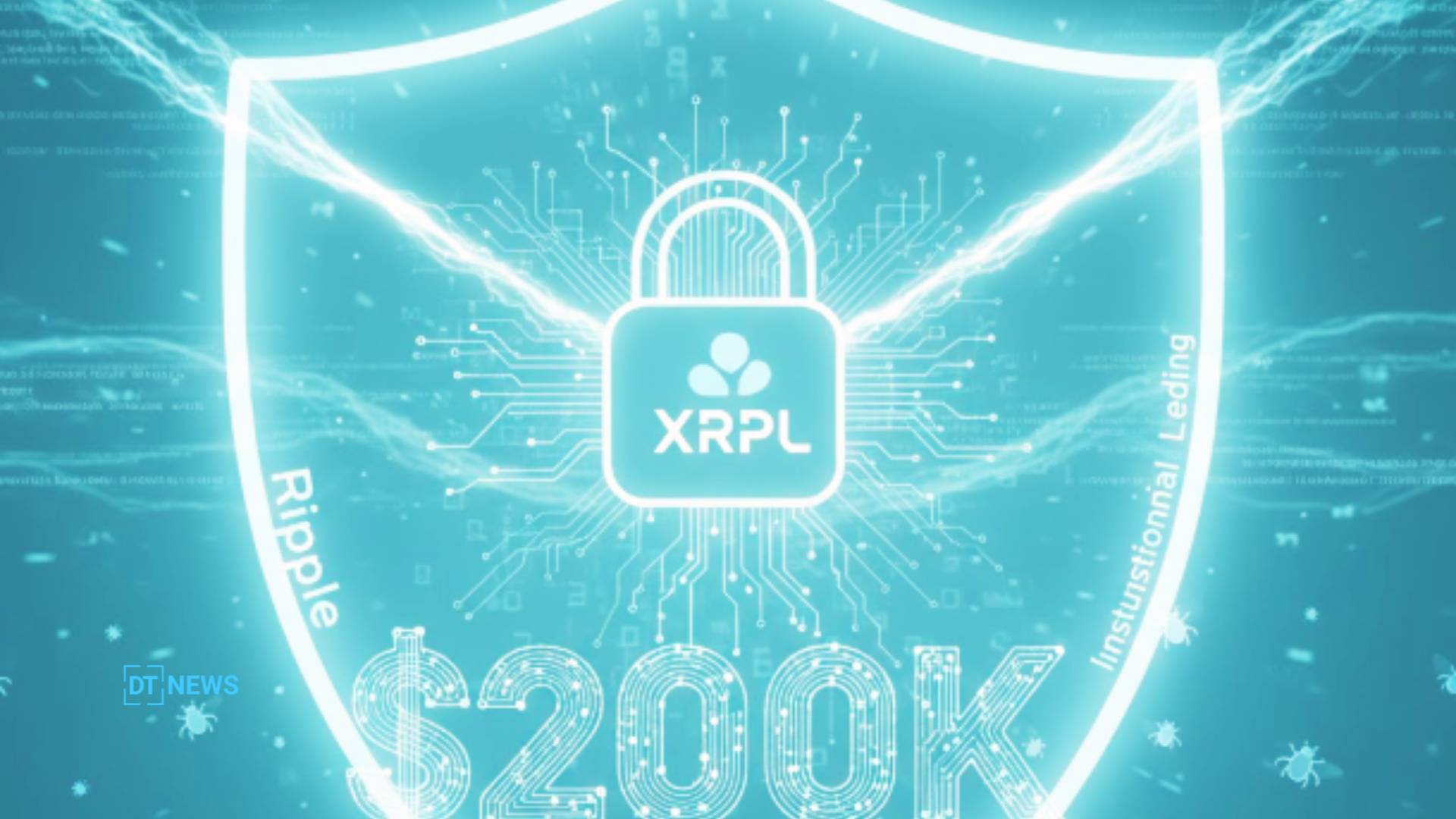Ripple has taken a fresh step into decentralized finance by announcing a $200,000 “Attackathon” in partnership with Immunefi. The initiative invites white-hat hackers and blockchain researchers to identify weaknesses in Ripple’s upcoming XRPL Lending Protocol, a system designed to bring uncollateralized institutional lending to the XRP Ledger.
Ripple Steps into DeFi Security
For Ripple, the move signals more than a simple protocol test, it reflects a broader transition toward institutional-grade decentralized finance. The XRPL Lending Protocol aims to connect traditional credit systems with on-chain finance, offering fixed-term lending options without requiring collateral. The company’s engineers describe it as an “on-ledger credit layer built for scale and trust.”
The Attackathon begins on October 27 and will run through late November. Participants will explore the protocol’s core systems, including vault operations, interest logic, and liquidation models. Ripple has also established an “Attackathon Academy,” a two-week onboarding program that helps researchers understand XRPL’s technical architecture before diving into live testing.
Ripple and Immunefi Join Forces
Immunefi, known for managing major Web3 security programs, will oversee the event and handle vulnerability submissions. According to Ripple’s Head of Product, Jasmine Cooper, this partnership is about reinforcing transparency and trust before launching a major institutional product.
She stated, “We want to ensure the XRPL Lending Protocol is resilient before it ever handles real capital. This collaboration allows the best minds in blockchain security to test our infrastructure.”
Immunefi’s CEO, Mitchell Amador, added that the goal is to merge Ripple’s enterprise-grade framework with the grassroots security expertise of the white-hat community.
Ripple’s Expanding Institutional Vision
Ripple’s strategy appears to center on making the XRP Ledger a hub for regulated, tokenized credit products. The XRPL Lending Protocol, governed by the proposed standard XLS-66, is intended to bridge on-chain assets and traditional credit lines. If successful, it could position Ripple as a front-runner in blockchain-based institutional lending.
This expansion comes amid rising competition. Ethereum, Solana, and Polygon have dominated DeFi lending with their smart contract ecosystems. Ripple, however, is carving out a different niche by integrating credit functions directly into the ledger layer. This approach may improve security and reduce reliance on third-party smart contracts.
Ripple Strengthens Trust Through Testing
Security has always been a sensitive point for DeFi platforms, where one exploit can drain millions in seconds. Ripple’s decision to hold a public bug bounty ahead of launch indicates its effort to get ahead of such risks.
Earlier this year, Ripple developers faced minor vulnerabilities in ecosystem tooling, prompting a company-wide review. This Attackathon appears to be part of a broader plan to build stronger defenses.
On X, blockchain analyst Miles Deutscher commented, “Ripple running a full-scale bug bounty before launch is a smart play. It shows they are serious about earning institutional trust.”
Such public engagement may prove crucial as financial institutions weigh whether to use the XRPL for real-world lending operations.
Summing Up
The upcoming Attackathon represents Ripple’s proactive approach to building secure, compliant infrastructure for institutional DeFi. By opening its code to scrutiny, Ripple is signaling confidence in the XRPL’s evolution and in its ability to merge traditional finance with blockchain-based credit.
If the program succeeds, it could reshape how institutional players view decentralized lending, and mark a pivotal moment in Ripple’s broader digital finance roadmap.
Frequently Asked Questions
1. What is Ripple’s Attackathon?
It is a bug bounty competition that invites developers to identify vulnerabilities in Ripple’s XRPL Lending Protocol before it launches.
2. How much is the prize pool?
The total prize pool is $200,000, distributed among researchers who uncover significant security flaws.
3. What makes the XRPL Lending Protocol different?
Unlike other DeFi systems, it integrates lending directly into the XRP Ledger, eliminating the need for external smart contracts.
4. Why is Ripple focusing on institutional lending?
Ripple aims to merge blockchain efficiency with traditional credit markets, creating a regulated and scalable DeFi model for institutions.
Glossary
XRPL Lending Protocol: A proposed on-ledger lending system developed by Ripple to support institutional loans on the XRP Ledger.
Attackathon: A structured event where cybersecurity researchers compete to identify and report system vulnerabilities for rewards.
Uncollateralized Lending: A loan system that relies on reputation or credit scoring instead of asset-backed guarantees.
XLS-66 Standard: A proposed technical specification on XRPL that defines how lending transactions are managed natively within the ledger.


















































































































